Jaffna, decompiled!
By Chamil ChandrathilakeAppetite for travel can be triggered by many catalysts. For some it’s the zest to explore the world. Some others find it interesting to experience different cultures. And for some, it can even be food! Living with software all the time, a bunch of buddies from ‘Geveo Australasia’ got together to do some travelling, triggered by different catalysts. And Jaffna was the destination. There were 11 of us gathered together, all excited in their own way. Having chosen the hill country for hiking and trekking for the last few years, this was a going to be a different taste for me personally as well.
A trip to Jaffna was always on the cards since Suthakaran, a Geveo member whose hometown is in up north, always had his place open for anybody who’d visit Jaffna. So, the 11 of us, including me, Aruna, Chamika, Thilanka and her husband, Chinthaka, Sandun, Chandula, Asanka, Tharindu and Ishan had little trouble choosing where to go. The arrangements were done quickly, and on a gloomy Friday evening of late May, the gang set out from the office to the Colombo Fort railway station as tickets were booked for the Jaffna bound night-mail, scheduled to leave at 8.30 pm. News of the devastating flood in down south has stirred our excitement somewhat, but since everything was planned and booked, any change of plans would have been costly. The train arrived in time to the station and within few minutes, we were travelling to Jaffna, and the much-awaited trip-to-Jaffna officially started!
After a long but entertaining train ride overnight, we got down at the Jaffna railway station early in the morning next day. Jaffna is a bit of a different city from the ones in the South. You can see cows walking by, literary in any street. Bicycle seemed to be a very close friend of the people that it’s a common sight to see even females of all ages using bicycle as their first-choice travelling partner. The city has its nerve-center spots in close proximity with each other. Just as you get out of the Jaffna railway, the hospital can be seen. And a few hundred meters ahead, the island–renown Jaffna library resides, gorgeous in its front view. By the sea was the Jaffna Fort, and right beside it was the Duraiappa stadium which has been named after the assassinated mayor Alfred Duraiappa in 1975. A short walk around gets you to Jaffna central bus station, the Hindu College, Nallur kovil and how can you forget Rio, the ice cream shop!
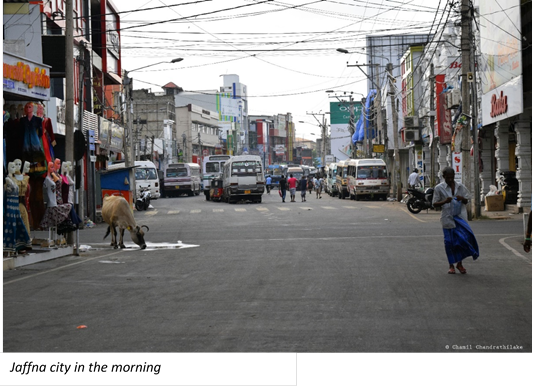
Despites being bordered to the Indian Ocean from the South, Jaffna city is a hub connecting several key towns of the peninsula. The roads to Point Pedro, Kankesanturai, Karainagar, Nainativ and the A9 – the gate to the South all meet each other at Jaffna. The first destination of ours being the Nagadeepa, we needed to travel through the road towards Nainativ. But first things first. Everyone’s first requirement was a delicious plate of Jaffna food for the breakfast!
It was an ordinary restaurant in central Jaffna which looked similar to a regular pastry shop in Colombo. We walked in and sat in a long table prepared for us. We expected a plate of what we ordered but what came first was a bunch of banana leaves as plates. And the food too came in several rounds, first being tasty Ulundu Wade. Then came the most awaited main course, Parata and Those, with Jaffna curries smelling awesome just as their own taste.
After the breakfast, it was time to visit our first destination, the Nagadeepa. We hired a van and a local driver and left for the Nainativ Island with no delay. The roads were straight as an arrow for the most part, specially the ones which connected the islets with the mainland. The ride was fast, and it’s a must to mention that drivers of Jaffna have many things in common with those in Colombo. After all, its Sri Lanka, or the Indian sub-continent for that matter! In less than an hour, we reach the end where we needed to switch to a ferry that would take us to Nainativ.
After waiting for few minutes, the ferry arrived, and about 60 people were ‘packed’ into it. With old and torn life jackets given to us and the cracked wooden deck, it would have required a Chathura Senaratne to save us in an emergency situation. The noisy motor started in a minute, and there we were, swinging in a ferry, sailing to Nagadeepa.
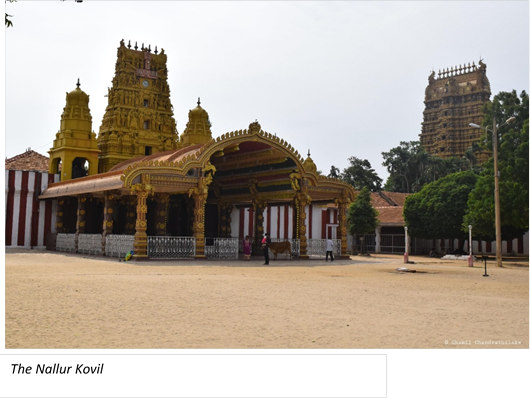
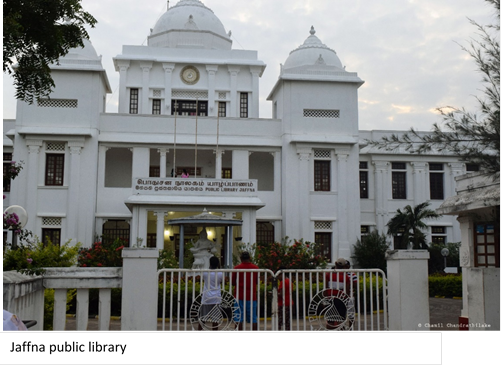
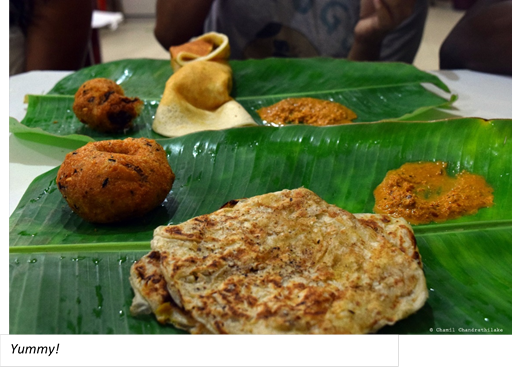
In 20-30 minutes, we arrived in the Nainativ Island, and the Nagadeepa Viharaya was right in front of us. Though I have learnt in the primary that the Lord Buddha has visited there, I hadn’t been there until that moment. It was a calm place, and we laid on the outside floor for about 20 minutes after the religious activities. And then we started to walk towards the Hindu kovil towards the north of Nagadeepa. On the way, there were plenty of sellers trying to sell us various things and some of their marketing strategies were in another level as one guy called Thilanka’s husband, ‘ayya buy these hakuru and make a wish that you get the same wife in your next life as well; it will come true’.
The kovil had a number of colorful monuments and religious buildings, and lazy looking cows were walking everywhere. We needed to wash our feet and remove our t-shirts before entering inside, which we did, and it was the first time for some of the guys inside a kovil. And of course, the rule was only applicable to males but the girls decided to wait outside. After hanging around in Nainativ for some more time, we were in another ferry back to the mainland, with less passengers and more swinging, the amount of which made couple of our members worry for a moment.
Back in the mainland, up next was to visit Suthakaran’s place and have lunch. The place where the van was parked was surrounded by a number of hungry cows and many of us started to feed them lead by our sympathy. But when some cows decided to follow Chandula all the way to the van asking for more food, we decided to think twice before feeding the roadside animals. Back in the van, while travelling towards Jaffna, a man was selling some fruits which had a similar shape to king coconuts which were later introduced to us by Suthakaran as ‘Palm fruits’. The edible part was similar to what’s inside king coconuts and the taste was less sweet. The fruit was too expensive for its quantity of edible parts but the seller swore of how healthy it was. Not only that but he also went on to tell us a bit of history of the fruit and didn’t let us leave until Asanka answered his question – who has brought this tree to Sri Lanka. Hanuman it had been.
Suthakaran’s place was in Nelliadi, a town located in the northeast part of the peninsula. The route was through the Jaffna city again, so we decided to visit the historic Jaffna Fort which was on the way. Built buy the Dutch and bordered to the sea from one side, Jaffna fort reminded me of the Galle fort, but the interior was empty compared to the latter. Sings of the war were very much visible with broken walls and rubble everywhere. The setting took me back to the story of ‘Operation – Jaffna Fort’ that I read in a book 2 weeks ago. The book described how fierce the Jaffna fort was, occupied by the army and totally surrounded by the LTTE, with gunfire, mortars and land mines tallying deaths for both sides. 17 Years later, there we were, standing in the middle of the Jaffna Fort, taking photographs of each other and chilling. Tables have turned!
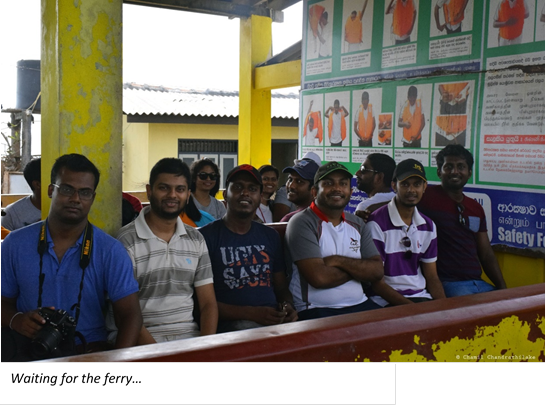
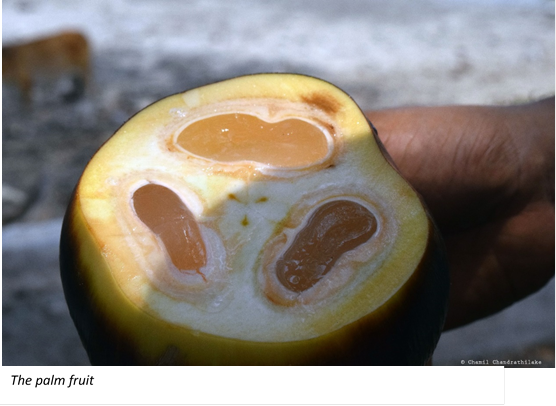

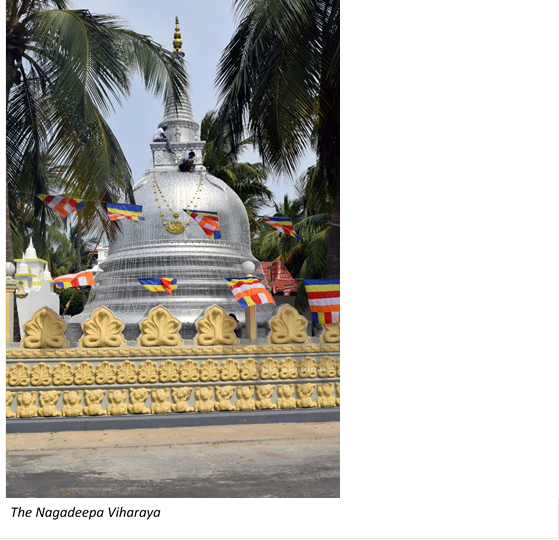
There was only one thing in all of our minds after leaving the fort- “lunch”. We were fried by the sun and nobody bothered to talk for the next 40 minutes in which we arrived in Sutha’s place. It was quite a calm and quiet place, except for a sudden scream of a goat or a hen. The garden had a lot of space and was shared by two dogs and some hen. Several trees stood tall above the garden giving the much-needed shelter. And against one, laid a Lumala bicycle. The house had a bit of a Hindu architectural touch as I felt, and in the walls of the verandah hung the success story of the family members framed in photos.
Just after we greeted the family, we were treated with some divine lime juice. It was vanished in two minutes and everybody stood up in a queue, eying the lunch table which had about 6 or 7 curries alongside a big bowl of rice. In usual Geveo traditions, Asanka is the first to serve from a table of food. But not that day, for obvious reasons.
The Jaffna-flavored lunch was perfect for us. We sat in the varenda for quite some time, talking about the genius ideas by Tharindu and Ishan about how to avoid selfies being mirrored, how to get Thilanka and Chandula out of the dressing room quickly and many more. At about 4 pm, we left for the Akkarai beach, which was located at Thondamanaru area.
Akkarai beach was unheard of by all our guys. You can walk about 300 meters into the sea due to its shallowness. It was a great place to bath, and there were very few people compared to a crowded beach in the South. The sight of visitors at Akkarai beach seemed to be not so common for the locals there as some of them inquired the whereabouts of us in broken Sinhala. One of them started a conversation with me with a smile asking, ‘Ayya me jaffna first time da? Gama koheda?’. I replied that I’m from Galle and it was my 2nd time in Jaffna. And I didn’t expect him to ask me ‘Galle koheda?’, which he did, to my surprise, and I answered ‘Ambalangoda’ with a smile. His next question was, ‘Galle hodatama flood neda? Oyalatat flood da?’. And the guy next to him also joined to inquire me about the flood and the situation in the South. I felt that it’s only the muddy politics of North and South that try to make people apart, whom otherwise would share the same lifestyle.
After a 2-hour bath, we got out of the sea and went back to the Jaffna city. First, we went to the market place to buy stuff to bring back and then went to a good restaurant called Valampuri for dinner. And then we went back to Sutha’s place planning to play cards until mid-night. But no, we couldn’t help falling into a deep sleep. And that was the end procedures for day 1!
Day two was to be started at 5.30 in the morning, as the plan was to see the sun rise from Point Pedro beach. Not all our members could wake up as early as that, so it was only 7 of us that visited the beach. The sea was very calm, and we waited for the sun. Sun did rise after a while but not straight up from the horizon. The thick cloud cover has applied ‘display:none’ style along the horizon. Nevertheless, the scene of sun rising up from the clouds itself was a great sight. Sandun must surely have regretted leaving his camera at home. With the arrival of the sun, the until-then calm sea started to dance, and the waves became stronger minute by minute. Finally, the sun was all out, shining above the Indian ocean, marking the start of a new day!
‘Point Pedro’ – the tip of Sri Lanka was our next destination. The place was aside the Point Pedro – KKS road. We first passed the Point Pedro town, which was quite empty as it was only 7 am when we passed there. We then travelled along the road towards KKS and saw the locals starting their day. The calm roads and the villages seemed to be very relaxing and gave a very pleasant feeling. After travelling for few minutes, we saw a concrete board by the shore, with Sri Lankan flag painted. And that was the point. The north most point of Sri Lanka, and the place where our homes were furthest away in the land of island.
We didn’t spend much time there as we had to go back, have breakfast and visit many other places. At about 8.30 am, we left for Casuarina beach, which was in Karaitiv. It was more than 40km away from Nelliadi and we visited some other places on the way too. One such place was the bottomless well at Nilavarai. We quickly had a glance at the dark blue watered well and continued the journey. It was abouy 10.30 am when we reached the Casuarina beach, and it looked gorgeous. One noticeable thing was the color of the sand of the beach, which was darker and less yellowish compared to the other beaches. However, what mattered for us was that the place was superb for a bath!
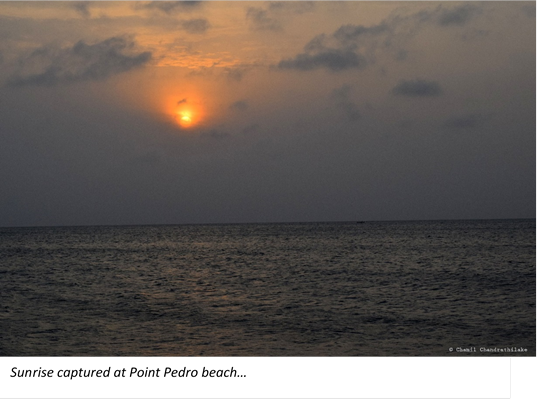
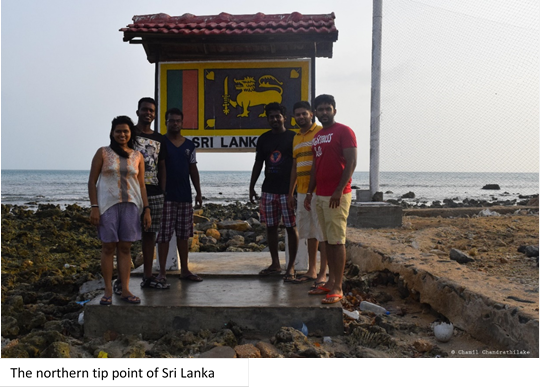
After having a bath there for nearly 2 hours, we were travelling back to Jaffna. On the way back, we visited the Sri Sangamitta Viharaya at Dambakolapatuna, which was probably being maintained by the navy. Few miles away from this place was a well of hot water springs but at first glance, it looked like a bit polluted to get into. The road we came in was parallel to the sea and I felt like this part of Jaffna had the toughest conditions to live. There were many abandoned buildings among vast palm fields. As Chinthaka said, the road ends at the Army Camp of Palali and the road looks like this till the end. Without travelling that far, we took a short- cut which met the Jaffna KKS road at Maviddapuram and within half an hour we were back in Jaffna.
As time has passed quickly, we dropped our plan to visit Elphant-pass in the evening and decided to roam around Jaffna city instead. After a good lunch, we went to ‘Rio ice cream’ – a must if you visit Jaffna. We then visited the Nallur kovil which was nearby, the Jaffna library next, and then came back to Sutha’s place quickly to say good bye to his family, and the only place we stopped at was a wade cart since Chandula has promised to buy all sorts of wade for all of us. We packed our stuff quickly while a quick debate arose between Aruna and Thilanka on how to say ‘thank you, we’ll come again’ in Tamil. Asanka the siri ayya who speaks a bit of Tamil overheard the debate and gave the victory to Thilanka.
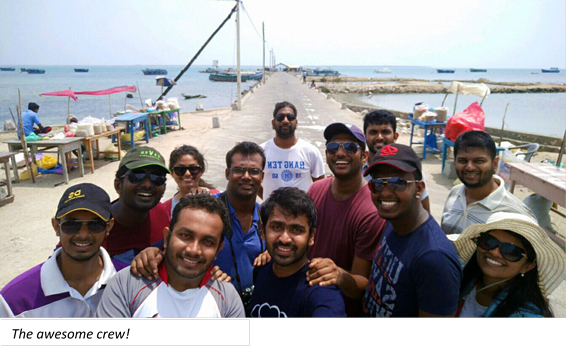
It was time to leave. We thanked Sutha and his family for providing great accommodation and taking us around Jaffna. Ending two great days of stay, we left his place as the night mail from KKS to Colombo was scheduled to leave Jaffna at 7pm. The train arrived on time, and we got in. The loud horn of the Colombo bound night mail marked the end of a memorable, fascinating journey. “Poitru Vanga, Jaffna”!

